It all started with a modest wall shelf I spotted at an Airbnb. It caught my eye for its simple functionality and straightforward design. I took several photos thinking that I might want to make it someday. Then I left the idea to simmer.
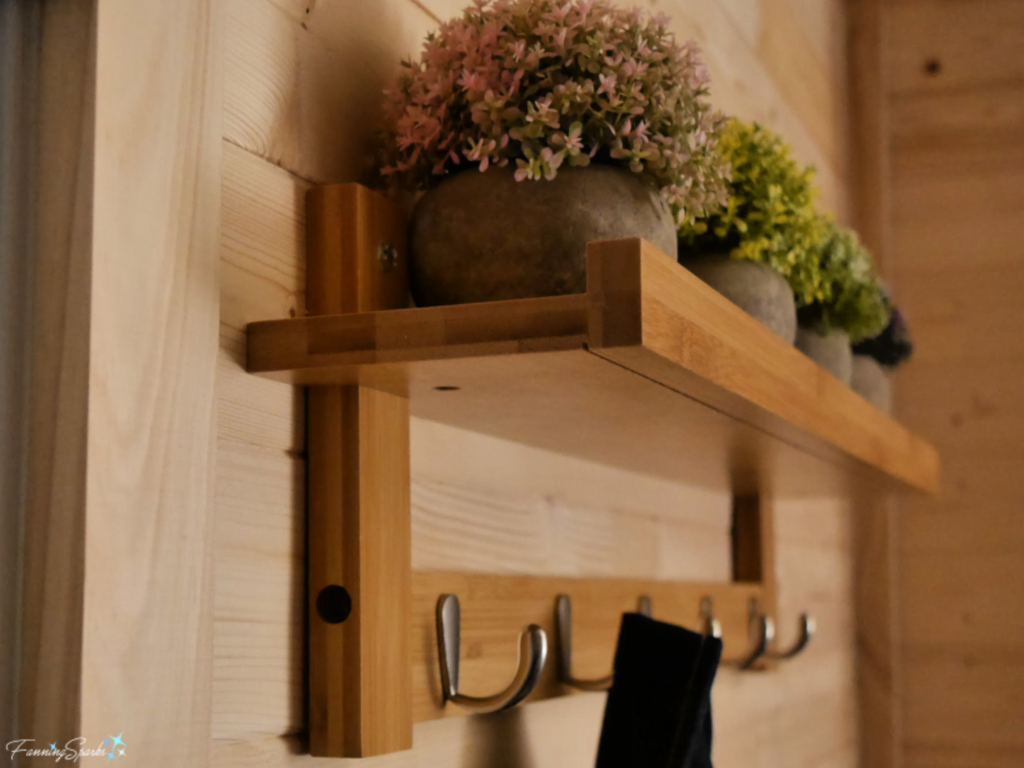
Fast forward a few months and I’ve been on a roll in the workshop. I decided to design and build a version of that simple wall shelf for our Half Bathroom. I had a do-over and a few missteps but I’m really pleased with the final results. Shown below is my simple wall shelf styled with a few treasured things including the recycled glass beads I bought in South Africa, a black petal-shaped bowl I made in my Hand Building Pottery Class, my favorite blown glass mermaid and an antique glass bottle used as a reed diffuser.
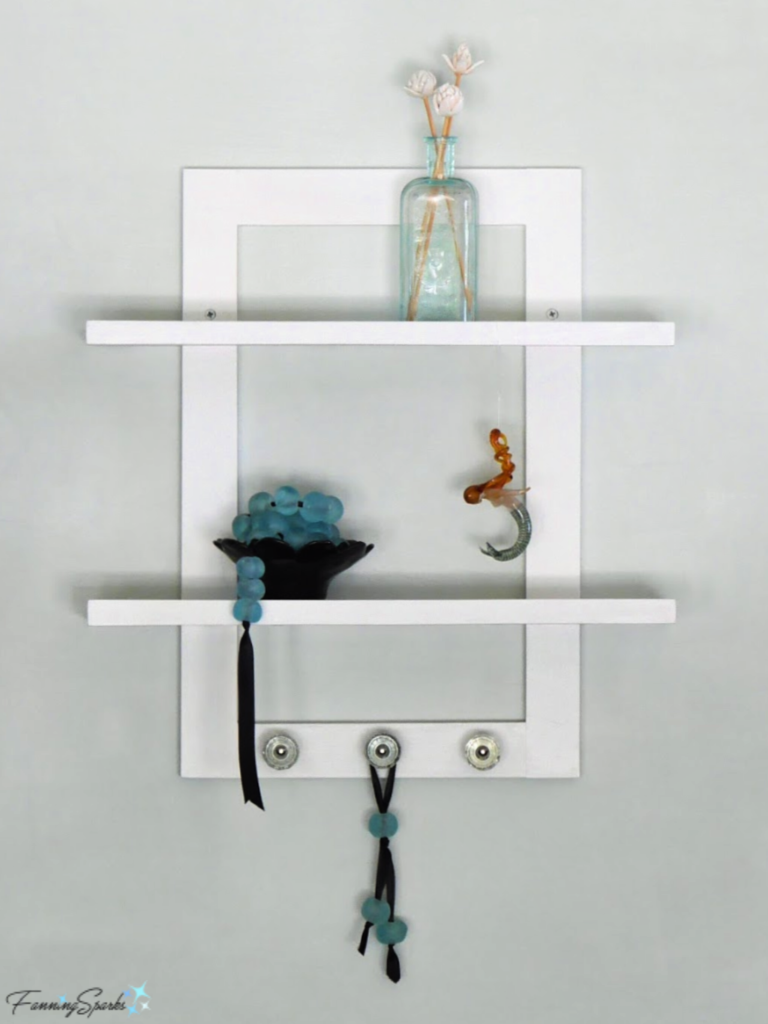
At only 18” wide x 19” high, this simple wall shelf doesn’t require a lot of space. All it needs is a few carefully styled items to add personality and punch. Today’s post includes detailed step-by-step instructions so you can make your own Simple Wall Shelf.
Supplies Needed
The following supplies are needed for this simple wall shelf:
. Wood Boards: 7 ft of ½” x 3½”. I used poplar.
. Screws:
… 4 x Size #8 1” length wood screws
… 4 x Size #8 2½” length wood screws
. Wire Nails: 4 x Size #17 ¾“ length
. Knobs: 3 small knobs or hooks with a base of about ½” to 1” diameter and a height of about 1” to 2”. I tried simple wooden knobs repurposed from an Ikea dresser but settled on clear glass knobs. You can use any type of knob or hook you like. Some examples are shown in Step 7.
. Wood Glue
. Wood Filler
. Paint (or preferred finish)
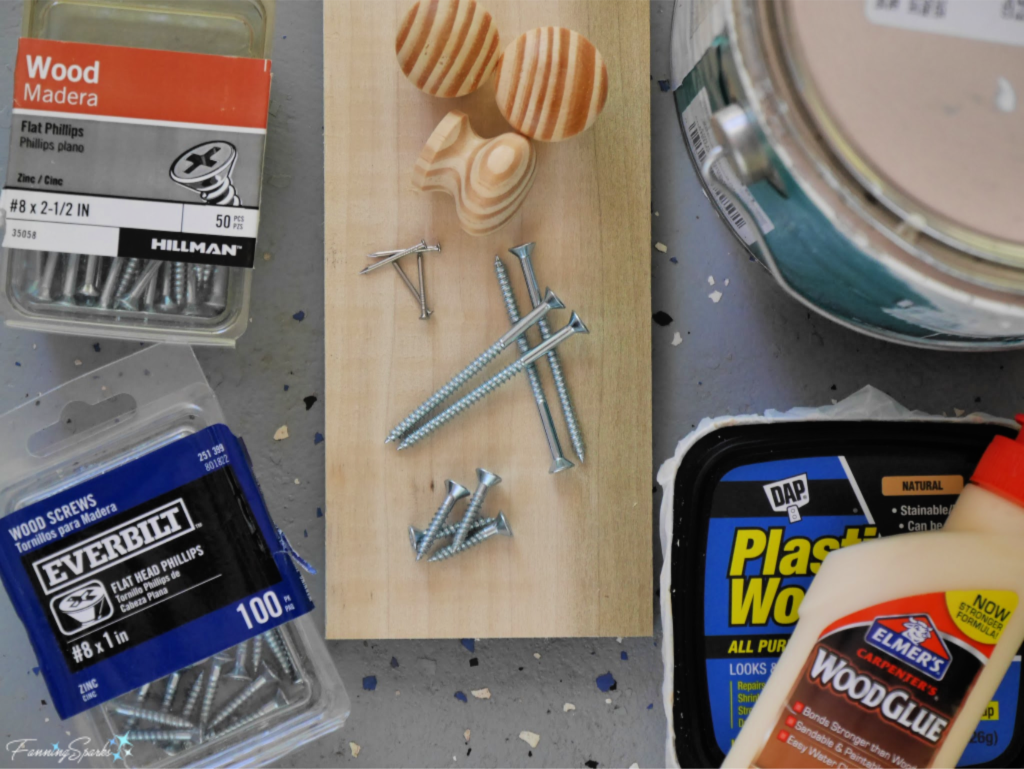
Tools Needed
. Jigsaw (or whatever type of saw you prefer to cut wood)
. Drill with 7/64” countersink bit for Size #8 screws
. Screwdriver
. Hammer
. Nail Punch
. Tape Measure
. Pencil
. Sharp Point: This will be used to indent the wood prior to drilling. A nail or screwdriver tip will work fine.
. Work Surface with Clamps
. Clamps
. Square
TIP: A speed square (aka rafter square) is great for small woodworking projects like this wall shelf. The overhang edge makes it easy to align an edge and ensure an accurate perpendicular line. Plus the handy 7” size is much easier to maneuver than the typical 24″ framing square. The speed square can be used for several other tasks (which admittedly I haven’t even tried) such as measuring angles with the built-in protractor, marking center lines with the built-in pencil notches and measuring rafter angles with the reference markings.
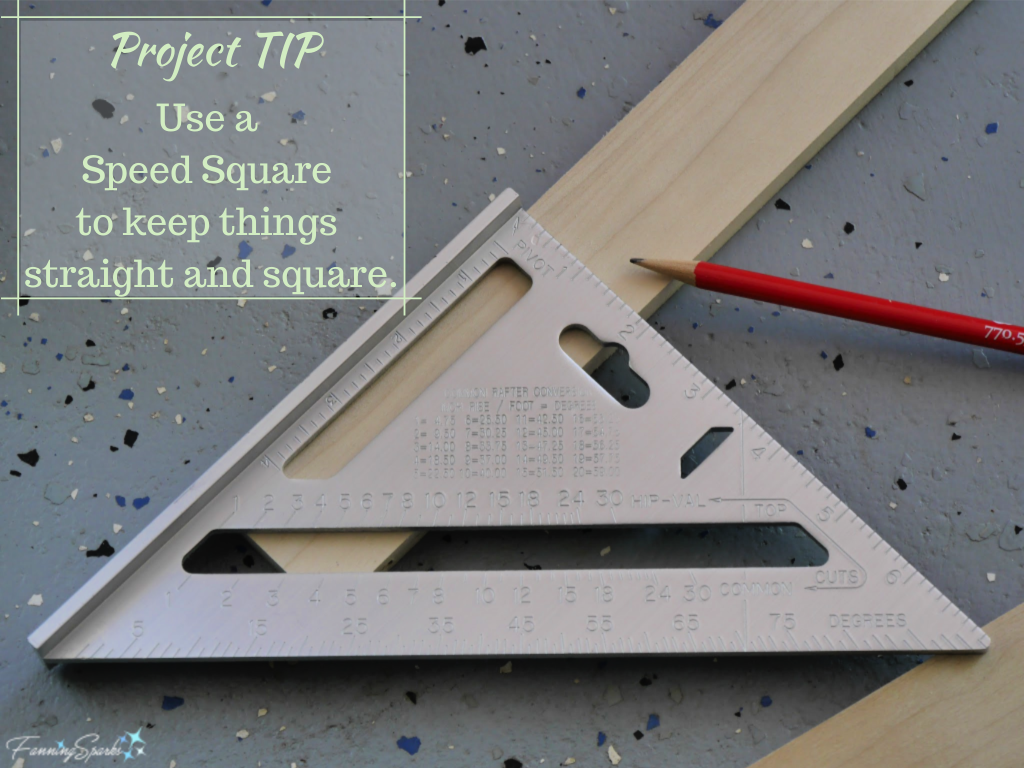
Instructions
Step 1 Cut Wood Parts. Cut the ½” x 3½” board into the following:
. 2 x Shelf 3½“ x 18”
. 2 x Shelf Lip ¾” x 18”
. 2 x Vertical Brace 1¾“ x 19”
. 2 x Horizontal Bar 1¾“ x 9”
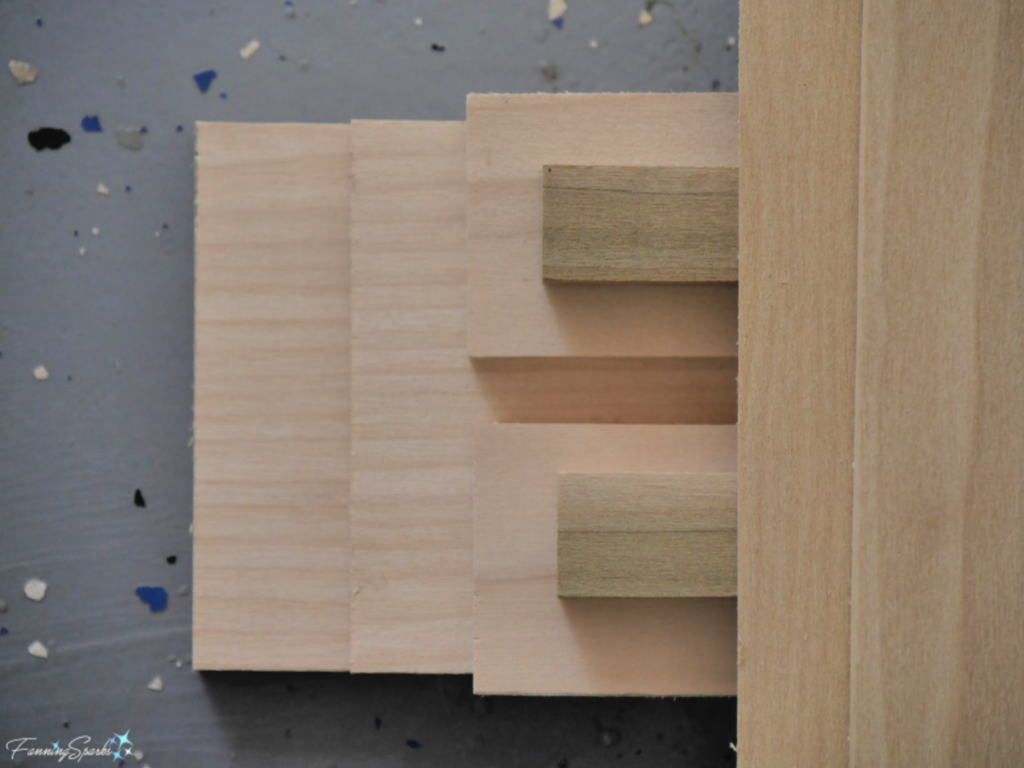
Step 2 Cut Notches. Notches in the back of the Shelves are used to attach them to the Vertical Braces. Measuring from the left end, along the back edge of the shelf, mark at: 2¾“, 4½“, 13½“, 15¼“. Finish marking the notches by connecting the 2¾” and 4½” markings at ½“ from the outside edge . Do the same between the 13½“ and 15¼” markings. The result should be two 1¾” x ½“ notches positioned 2¾“ from the ends. Repeat on the second shelf.
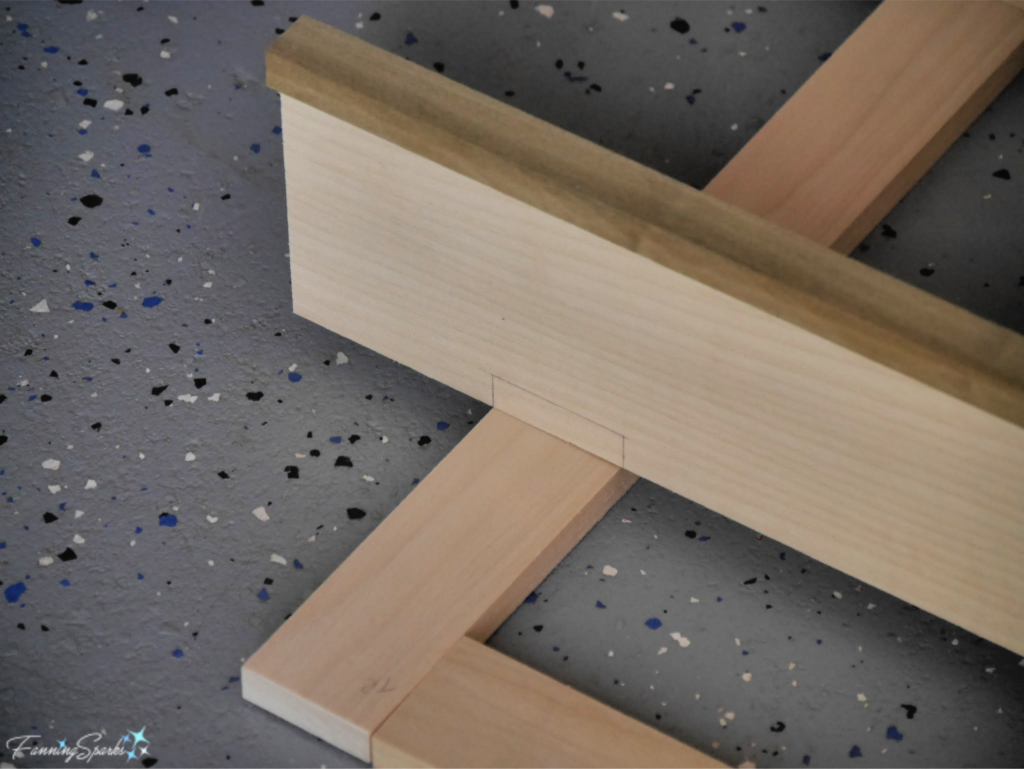
TIP: Before starting to cut out the notches with your jigsaw, drill holes in the inside corners. This makes it easier to stop cutting at the right spot. Then use a jigsaw to cut out the notches taking several passes to remove the wood.
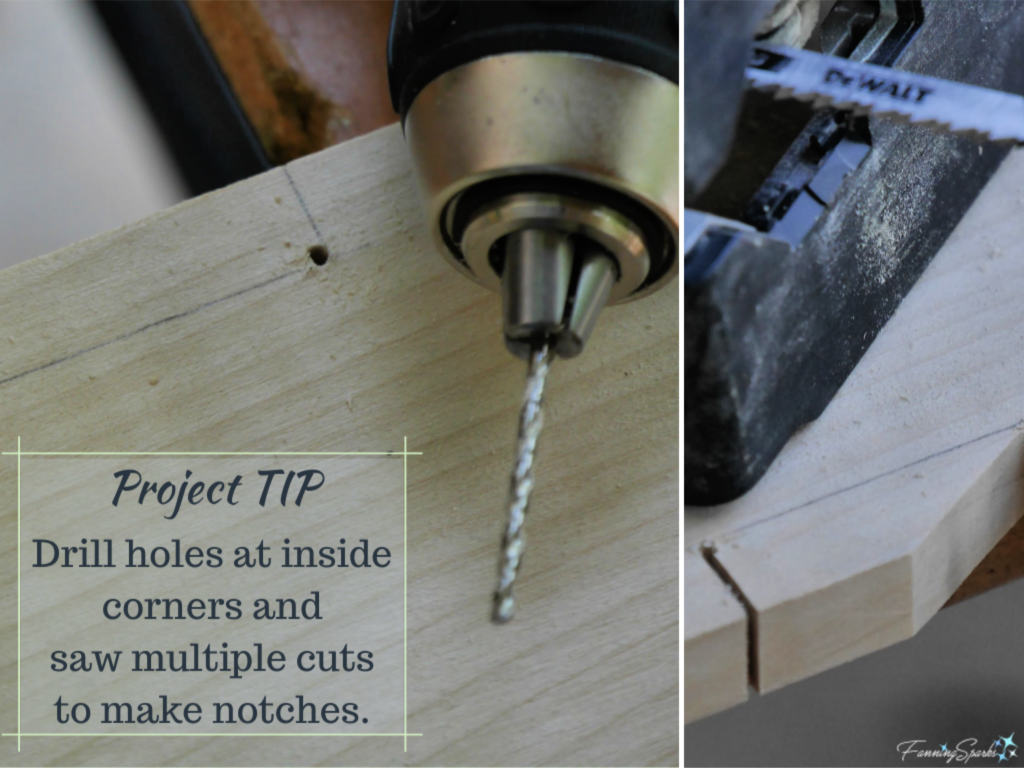
Step 3 Test Fit. Mark lines for shelf placement on the Vertical Braces. Measure down 5“ from the top edge and mark a line for the placement of top edge of the top shelf. Measure up 5½“ from the bottom edge and mark a line for the placement of the top edge of the bottom shelf. Assemble the pieces to get familiar with how they fit together and to ensure they fit correctly. Make any necessary adjustments. Pay particular attention to the fit of the notched shelves. Use a pencil to lightly mark front and top of each piece.

Step 4 Drill Parts. Measure and mark the bottom Horizontal Bar for the 3 knobs. Measuring from the left end along the center of the board (at ⅞“), mark with pencil at: 1⅜“, 4½“, 7⅝”. Take note of how your selected knobs are designed to attach. For instance, are threaded bolts attached to the knobs or do you need to screw them on from the back? Prepare the holes accordingly.
Measure and mark both Vertical Braces for all screw holes as follows:
. To attach top Shelf: 5¼” from top edge and centered at ⅞“; countersink from back
. To attach bottom Shelf: 5¼” from bottom edge and centered at ⅞“; countersink from back
. To attach unit to wall: 4½” from top edge and centered at ⅞“; countersink from front
. To attach top Horizontal Bar: on the narrow outside edge, ⅞“ from top and centered at ¼“; countersink from outside
. To attach bottom Horizontal Bar: on narrow outside edge, ⅞“ from bottom and centered at ¼“; countersink from outside
Indent at marks with the sharp point. Drill pilot holes with countersink at marks.
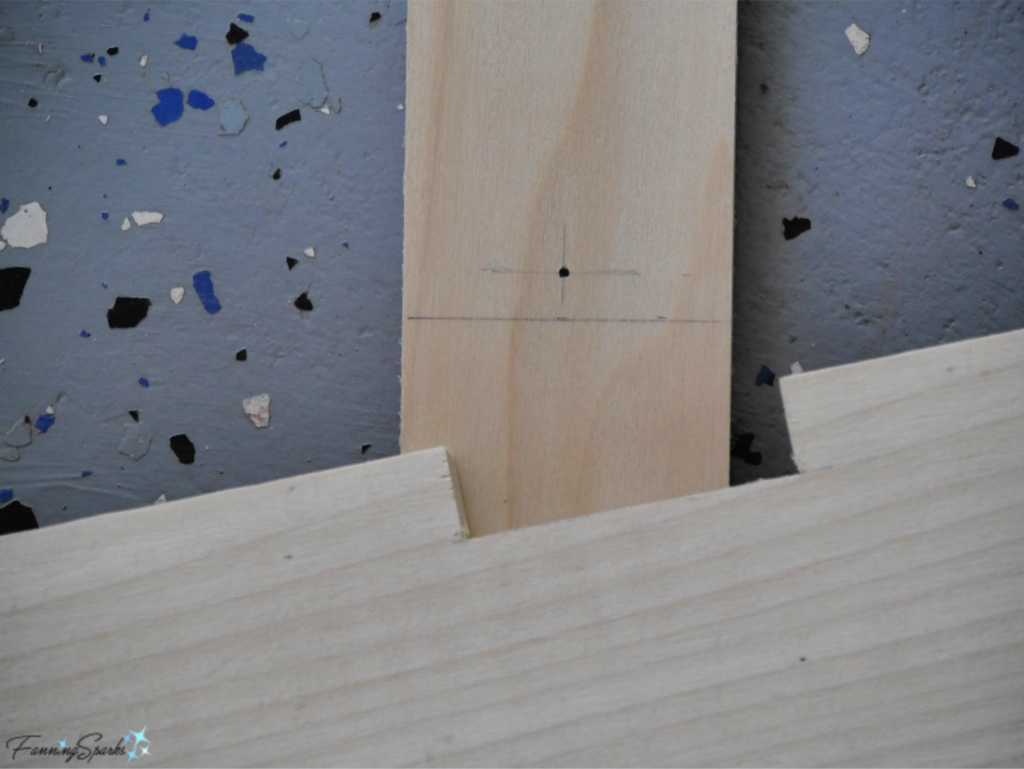
TIP: It can be tricky to drill the last set of holes in the Vertical Brace because the deep holes are drilled into the narrow face. I found it much easier to keep the drill level and plumb using a simple right angle corner jig I cut from scrap wood. Remove the jig to finish drilling the hole.
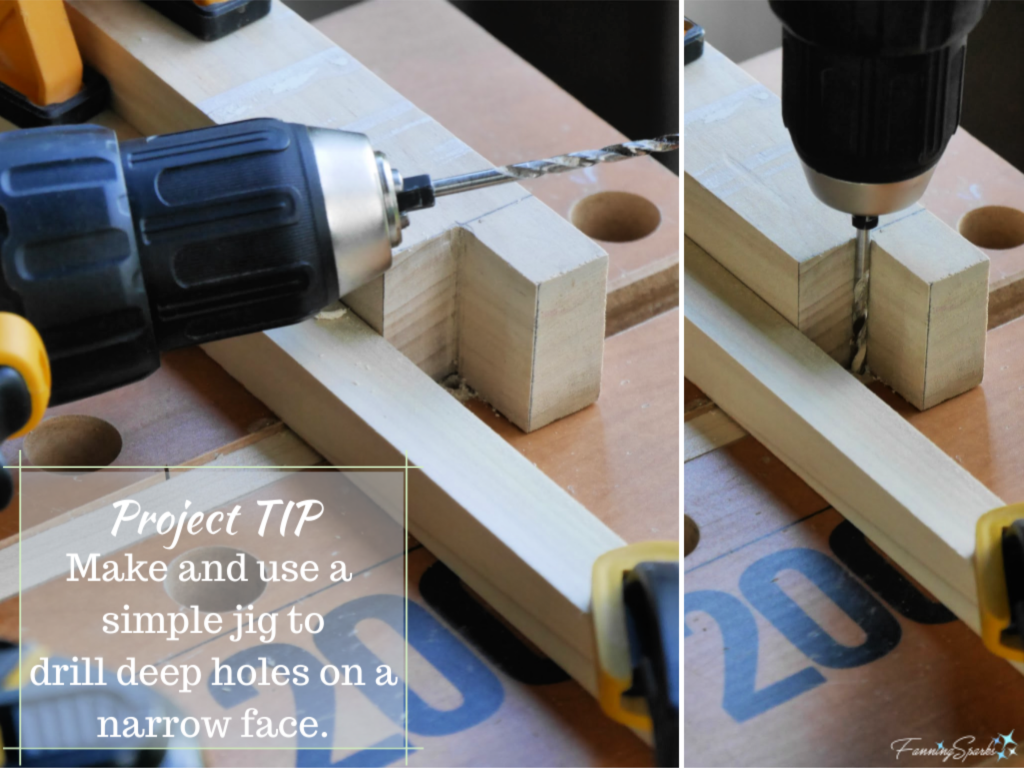
Step 5 Attach Shelf Lips. Attach a Shelf Lip to the front edge of each Shelf. Align the bottoms and sides; the front of the Lip sits ¼” above the Shelf. Glue and clamp the Lip in place. For good measure, use a couple of wire nails to secure in place. Use nail punch to recess the wire nails.
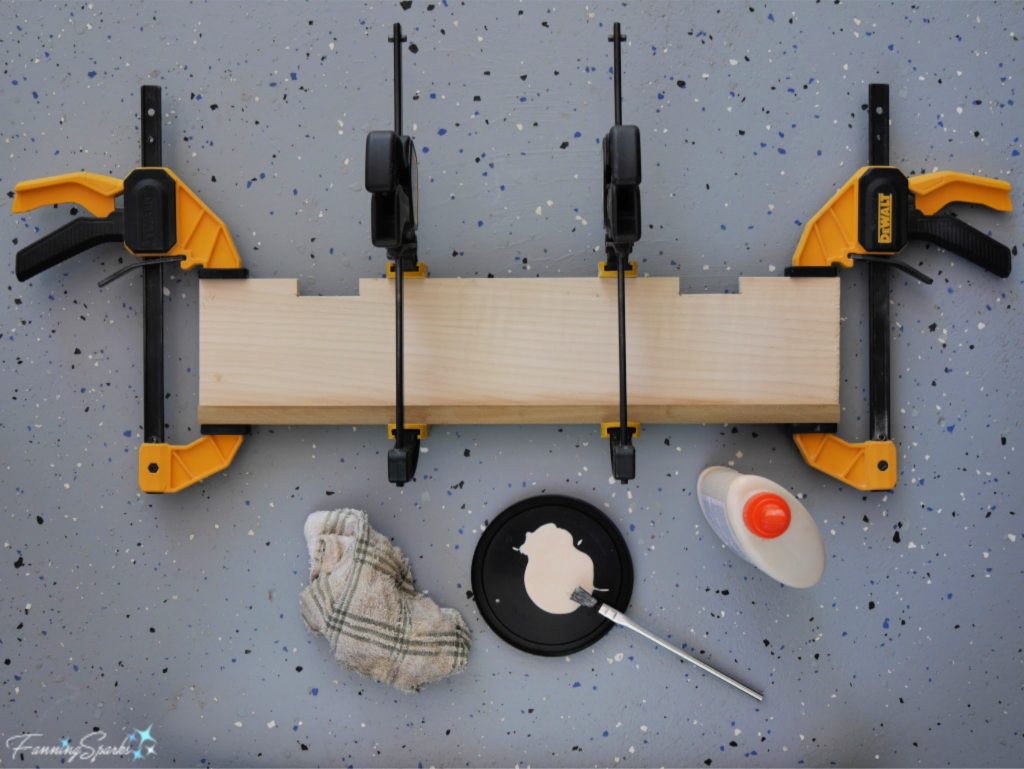
Step 6 Assemble Parts. Assemble the Vertical Braces and Horizontal Bars into a rectangle. Ensure the countersunk holes on the outside edges of the Vertical Braces are facing out, the countersunk holes for attaching shelves are at the back and the countersunk holes in the Horizontal Bar for the knobs are at the back. Ensure edges are aligned. Use speed square to ensure corners are square. Glue and screw in place with 2½” screws. Clamp until dry.
Attach the Shelves to the Vertical Braces. Use the placement lines made in Step 3 aligning top edges of shelves with lines. Ensure back edges are aligned. Pay particular attention to the shelves using the speed square to ensure they are level and square. Glue and screw in place with 1” screws. Clamp until dry.
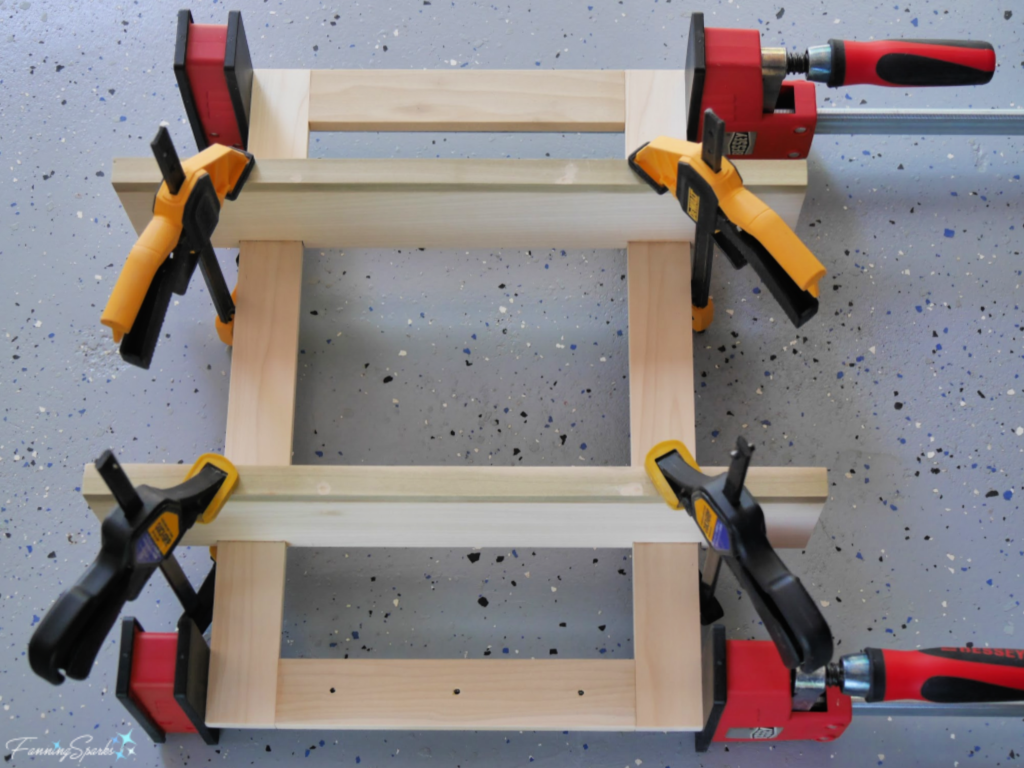
Step 7 Attach Knobs. As noted in the Supplies Needed section, you can use any type of knob or hook you like. I tried a few options including the simple wooden knob (shown in center) and an embellished version (shown on left). In the end, I chose the simple glass knobs (shown on right) because they don’t compete for attention with the items I displayed on the shelves. Attach your selected knobs to the bottom Horizontal Bar.
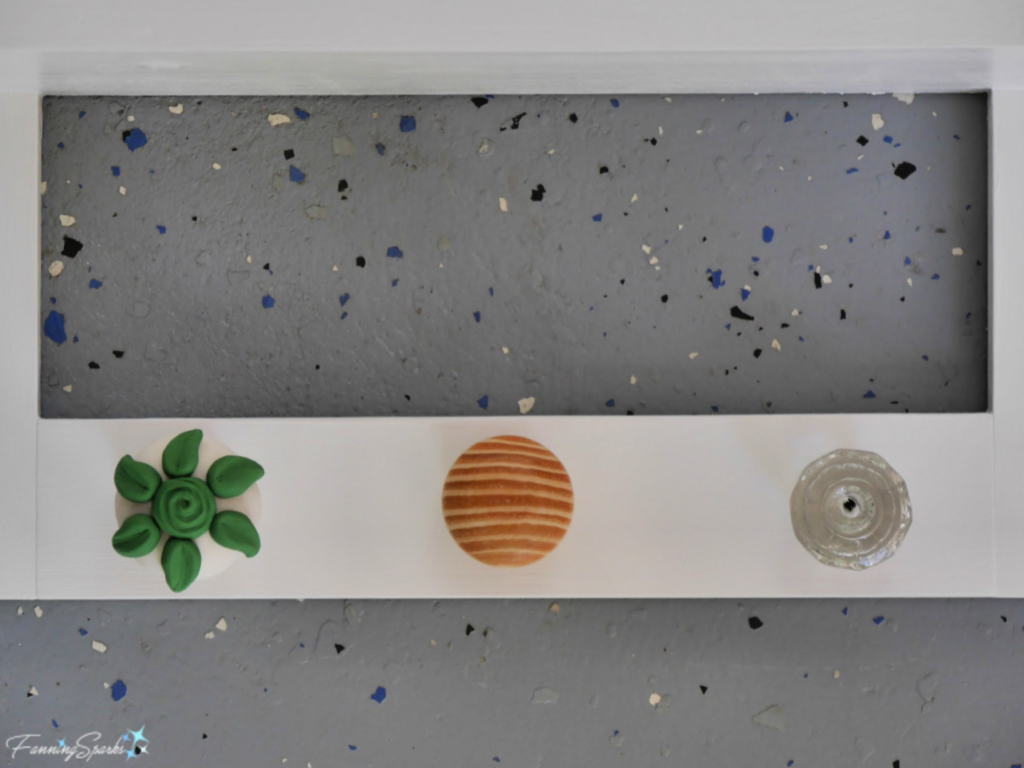
Step 8 Finish and Paint. Finish the wall shelf by filling the nail holes and any gaps around the notches. Sand smooth. Prime and paint.
Step 9 Hang Shelf Unit. Hang the wall shelf through the drilled holes on the Vertical Braces.
Step 10 Style and Enjoy. Have fun styling your shelves!
More Info
Please share or pin this image for future reference.
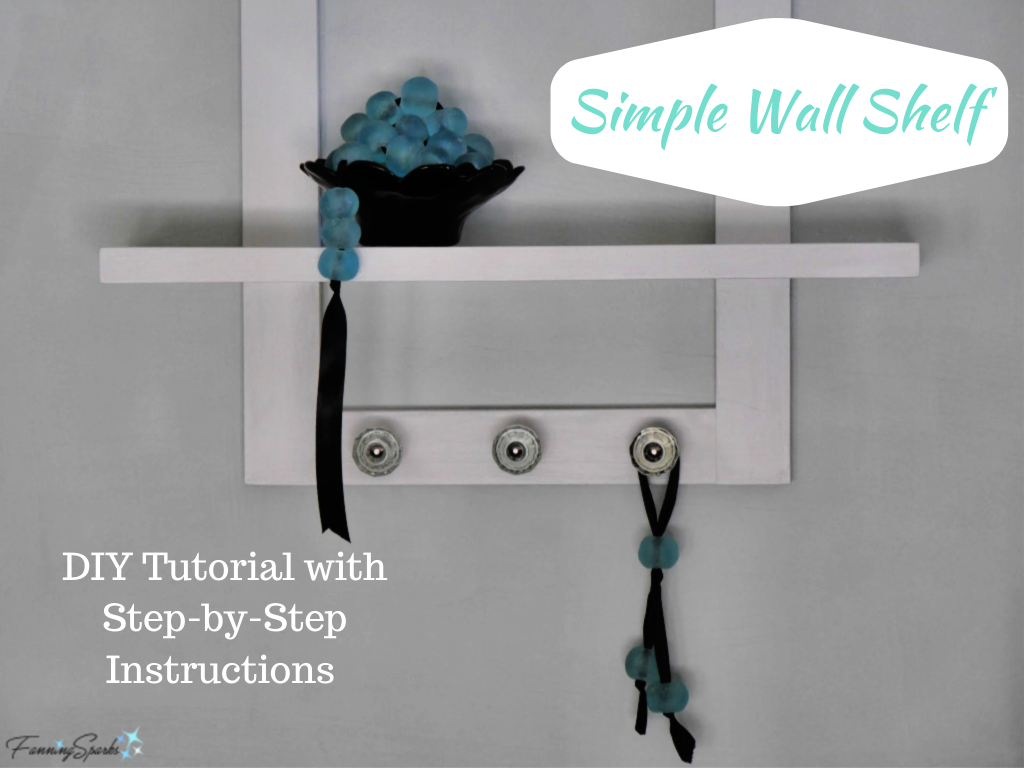
Looking for more beginner woodworking projects? How about one of these?
. The Ultimate Maker’s Cabinet
. Pyramid Trellis
. Bluebird-Approved Birdhouse
. Air Bee-n-Bee House
Today’s Takeaways
1. Whether travelling physically or virtually, take note of functional and decorative items that catch your eye.
2. Give ideas time to evolve and crystallize.
3. Consider transforming a blank wall into a miniature gallery using a simple wall shelf styled with a few treasured items.

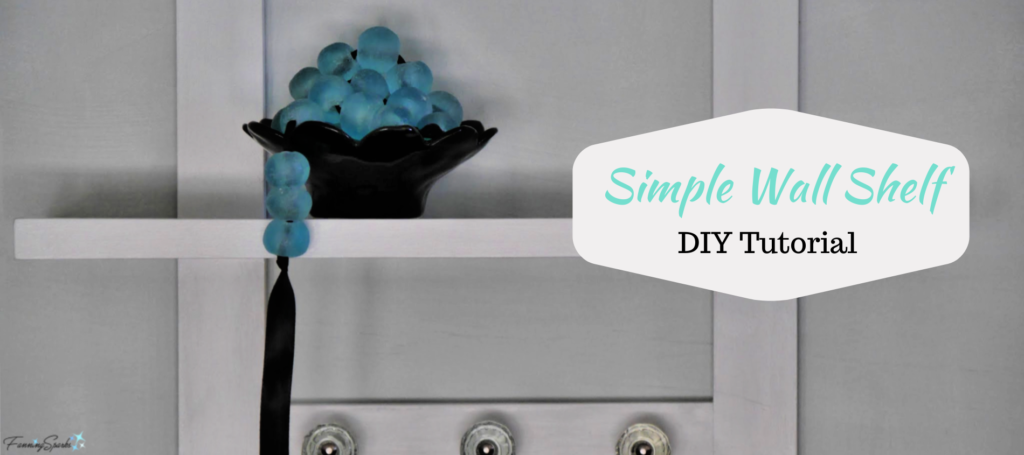


Comments are closed.